This post is about men, change, and museums — not necessarily separately or in that order, so please bear with me.
On Saturday, I read an article saying the Phoenix Art Museum was parting ways with the Cowboy Artists of America. For 37 years, the two have staged a joint show and sale of Western art in October. But sales declines over the past five years — once $2.8 million, but half that in 2009, according to the Arizona Republic — caused a reevaluation, and … splitsville.
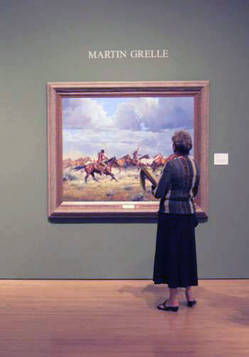 The breakup, said James Ballinger, director of the museum, “reflects a real shift in collecting habits and what people are looking for.” Tim Cox, president of the cowboys group, said the museum “wanted us to make some changes to the show that would have changed our uniqueness as an organization.”
The breakup, said James Ballinger, director of the museum, “reflects a real shift in collecting habits and what people are looking for.” Tim Cox, president of the cowboys group, said the museum “wanted us to make some changes to the show that would have changed our uniqueness as an organization.”
Both sides may well be correct. But here’s the good thing: Ballinger isn’t parting company with Western art. He promised that the museum would mount an annual Western-themed art exhibit. I say this is good not because I think Western art is so great — there’s good Western art, and bad Western art, the same as any category — but because it is one of the things that makes the Phoenix museum distinctive. Not every museum can differentiate itself from others — but it’s a positive when one can. It’s a reason for out-of-towners to visit.
I learned something else from the Republic article: the Phoenix museum has a Men’s Arts Council. Here’s what it does:
Men’s Arts Council (MAC) of Phoenix Art Museum was founded in January of 1967 to support the programs and activities of the Museum. Admission is by invitation only. With the talents and efforts of its over 125 members, MAC organizes three distinctively different annual events: the Cowboy Artists of America Sale & Exhibition, the Copperstate 1000 Vintage Car Rallye, and Vin Arte, Masterpieces Sale and Dinner. In addition, MAC members provide help in a variety of ways at the Museum.
The efforts of the Men’s Arts Council enable the group to make annual contributions to the Museum’s operating budget, to financially sponsor exhibitions and to fund two separate endowments: the Western American Art Endowment Fund and the Men’s Arts Council Sculpture Endowment.
The website hasn’t yet caught up with recent news, and it says that the April Vin Arte event has been postponed. Which is too bad.
But maybe the wine events weren’t making money either. I’m speculating, but sometimes events live past their sell-by date and it is time to change. I know that some museums have recently decided that many “support” groups have been costing more than they’ve delivered in benefits to the museum.
At the same time, I’d hope that Phoenix does keep events that address the male gap in attendance at museums. It has been a long time since anyone mentioned a men’s museum group. Years ago, I’d heard of one that held an annual men-only acquisitions dinner, at which — supposedly — they all smoked cigars and drank wine and outdid each other pledging money to buy art.
I’d suspect those events have gone the way some people apparently think Cowboy art has.
Photo Credit: © 2007 Judy Hedding

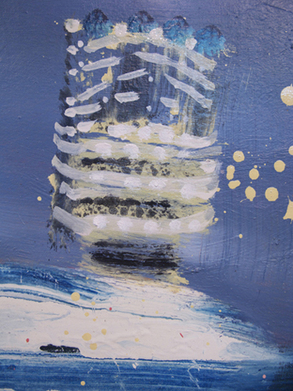 Here’s the list, and — to find what kind of work was deemed worthy — links to the best website about them I found: their own, their dealer’s, or another art website.
Here’s the list, and — to find what kind of work was deemed worthy — links to the best website about them I found: their own, their dealer’s, or another art website.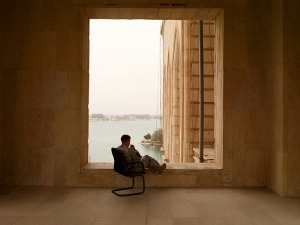 Bradford’s “Ferry” is above.
Bradford’s “Ferry” is above.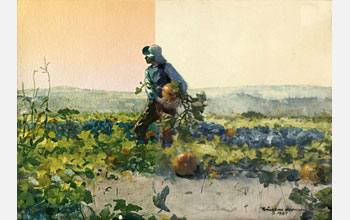 The latest involves two paintings at the Art Institute of Chicago: Winslow Homer’s For to Be a Farmer’s Boy (a watercolor made in 1887) and van Gogh’s The Bedroom (1889). Using new techniques on the Homer, scientists now know for sure that the sky — “starkly blank” now — was once “a vibrant autumn sunset, with organic purples and reds, in addition to inorganic reds and yellows.”
The latest involves two paintings at the Art Institute of Chicago: Winslow Homer’s For to Be a Farmer’s Boy (a watercolor made in 1887) and van Gogh’s The Bedroom (1889). Using new techniques on the Homer, scientists now know for sure that the sky — “starkly blank” now — was once “a vibrant autumn sunset, with organic purples and reds, in addition to inorganic reds and yellows.” 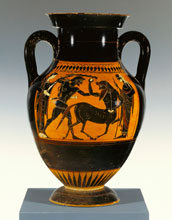 In another instance, the Metropolitan Museum of Art* is using new anti-body based research to “uncover the material world of art–the organic compounds mixed with inorganic materials that compose what we see in a painting, a sculpture or even costumes.” Discoveries were not disclosed so there may not be any — yet. But read more
In another instance, the Metropolitan Museum of Art* is using new anti-body based research to “uncover the material world of art–the organic compounds mixed with inorganic materials that compose what we see in a painting, a sculpture or even costumes.” Discoveries were not disclosed so there may not be any — yet. But read more 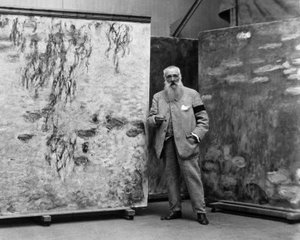
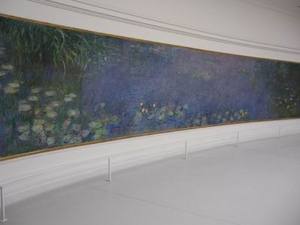
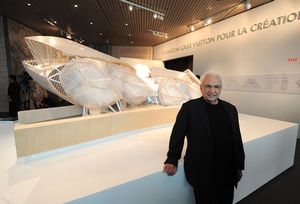 But some neighbors objected; they want the space to remain green. And they don’t want this to be the start of more buildings in the bois, even if it’s by Gehry.
But some neighbors objected; they want the space to remain green. And they don’t want this to be the start of more buildings in the bois, even if it’s by Gehry.